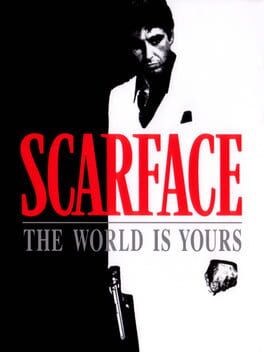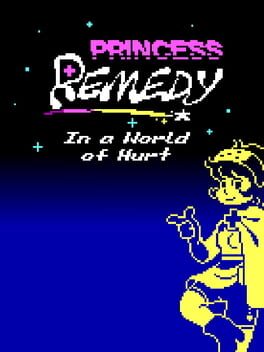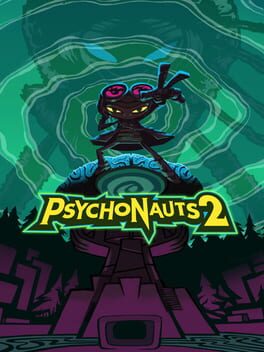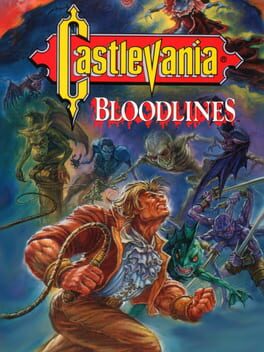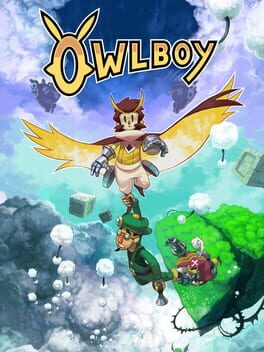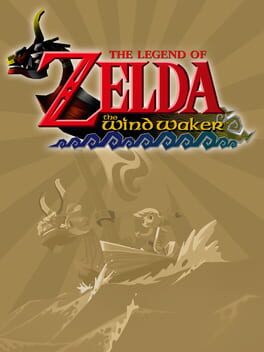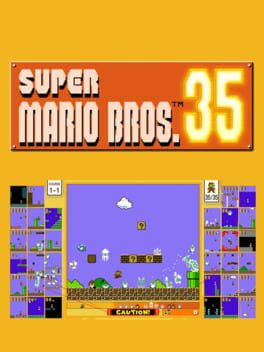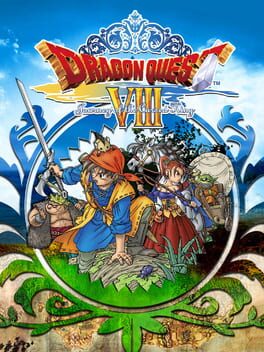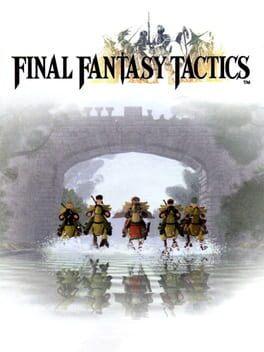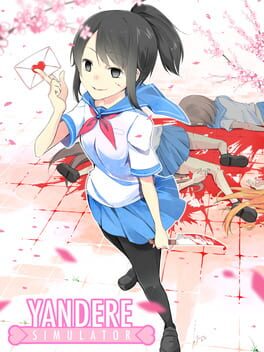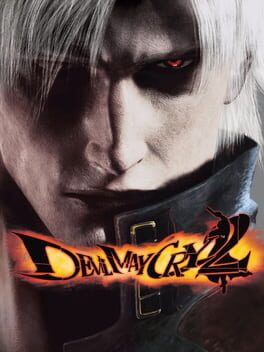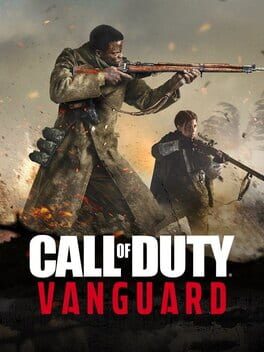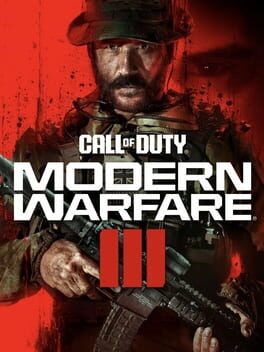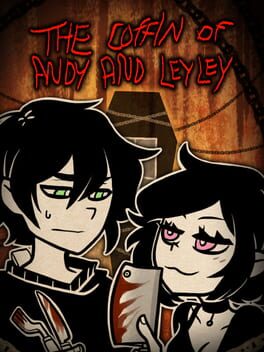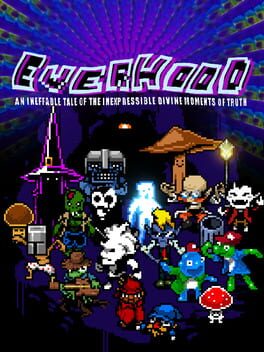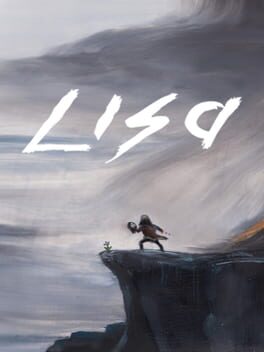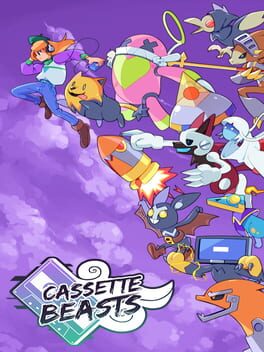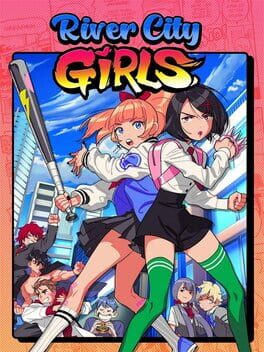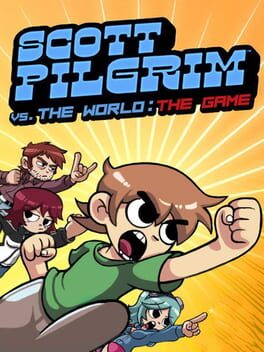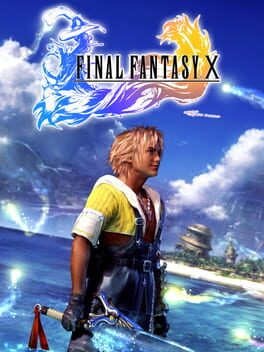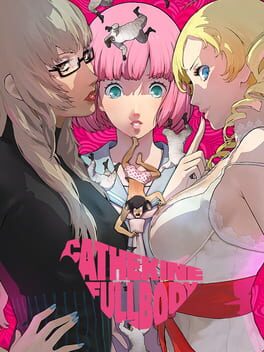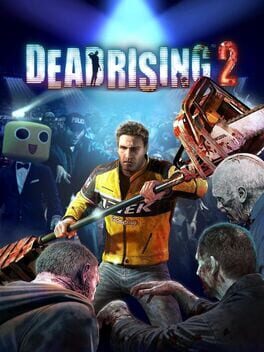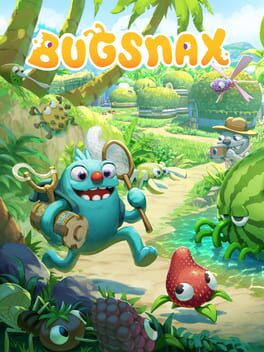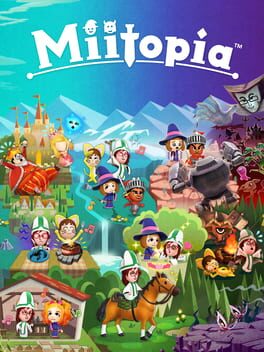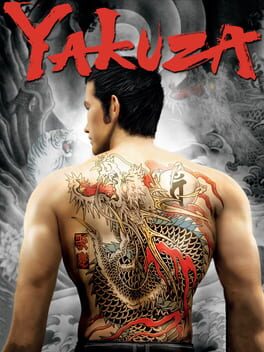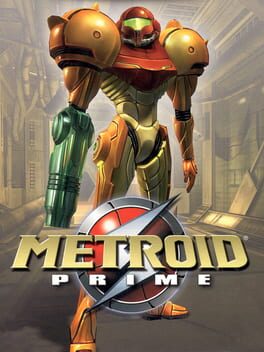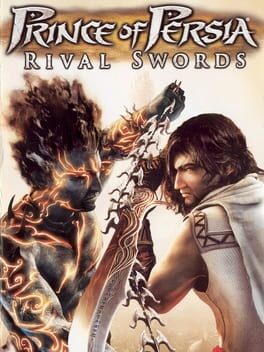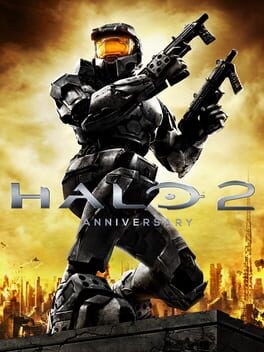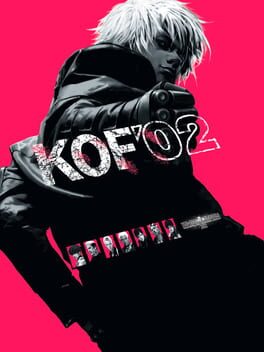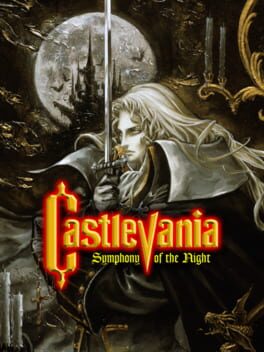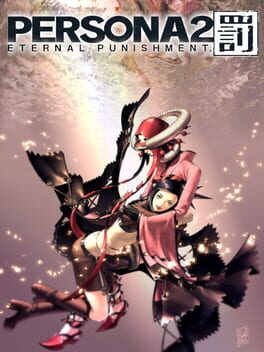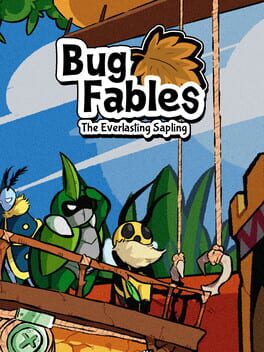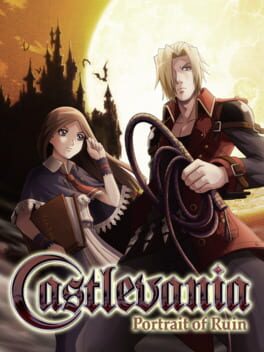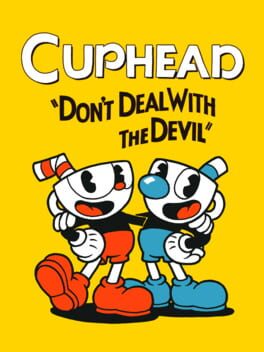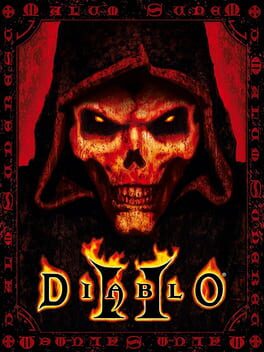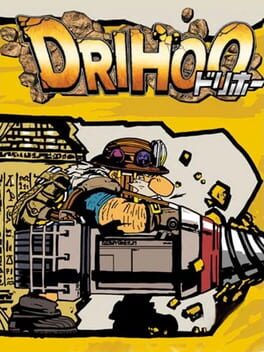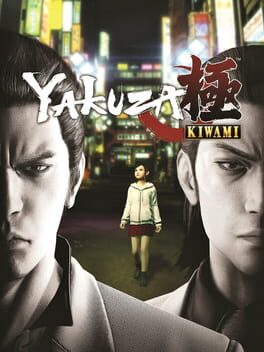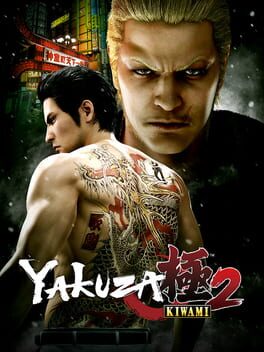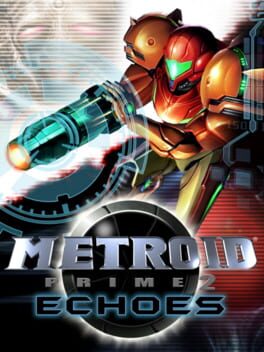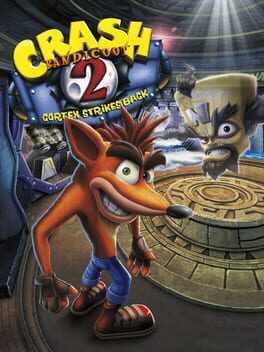Steinco
BACKER
492 reviews liked by Steinco
This game taught me the word 'fuck.'
I first played Scarface: The World Is Yours on the PS2 at age 8, and I have memories of shocked guests (except for the one cool uncle who knew the movie) watching this kid play a game that yelled the F-word every 5 seconds. I have never finished this game, and I never will. I've tried a few times (a couple of years after my parents finally took away the PS2 version's disc, I burned this game onto a blank DVD to play it again), but after another day of giving it the old college try, I'm done.
It's incredible how our child selves overlooked flaws because we were just happy to have games to play. I used to think Scarface was a better GTA game than the actual GTAs, because you could go into buildings and have conversations with NPCs on the street and do vehicular combat and piss in trash cans and swim (I wasn't aware San Andreas had swimming).
Playing it as a grown man, I can see how shallow Scarface: The World Is Yours really is. If there was ever an AI-generated video game, this is what it would look like. Most of the aforementioned conversations are just you and an NPC speaking random lines at each other; the missions are repetitive and require grinding of randomly generated sidequests before you get a crumb of story; the world is designed to be faithful to the setting rather than fun to navigate. Almost all back streets have dead ends, and cars can't climb over anything. Forcing the player to stay on the road makes car chases a bore and evading the police a chore.
It's all very faithful to the movie, to a fault. The game quotes the film's classic lines into memehood. Tony Montana feels like a cartoon with Alzheimer's disease as his monologues are lifted wholesale from the film to be re-dubbed here by an impressive soundalike - Al Pacino couldn't reprise his role after one too many cigars.
If you do want to check out this curiosity piece, try the PS2 version. The PC port is bad and buggy. You've probably seen the famous glitch where Tony's head isn't attached to his body if you're playing on anything newer than Windows XP. Sometimes you're forced to restart missions because the vehicle required to do them doesn't spawn. The graphics miss details that were present in the PS2 version, such as Tony's jacket getting soaked with blood as he takes damage. I played this game with a fan-made 'remastered' patch, plus half a dozen other fixes duct-taped together to give the fucking thing controller support and better performance. It still wasn't very good.
There was more effort put into Scarface: The World Is Yours than most licensed games, but it's no Batman: Arkham City. It has a lot to do, but it makes you do it so often it gets tiresome. It hastily rewrites the ending to one of my favourite films, and proves that being in a licensed game is a fate worse than death. I will always be somewhat fond of this game because of the childhood memories, but now the rose-tinted aviator sunglasses are off.
Manolo, choot this piece of chit.
I first played Scarface: The World Is Yours on the PS2 at age 8, and I have memories of shocked guests (except for the one cool uncle who knew the movie) watching this kid play a game that yelled the F-word every 5 seconds. I have never finished this game, and I never will. I've tried a few times (a couple of years after my parents finally took away the PS2 version's disc, I burned this game onto a blank DVD to play it again), but after another day of giving it the old college try, I'm done.
It's incredible how our child selves overlooked flaws because we were just happy to have games to play. I used to think Scarface was a better GTA game than the actual GTAs, because you could go into buildings and have conversations with NPCs on the street and do vehicular combat and piss in trash cans and swim (I wasn't aware San Andreas had swimming).
Playing it as a grown man, I can see how shallow Scarface: The World Is Yours really is. If there was ever an AI-generated video game, this is what it would look like. Most of the aforementioned conversations are just you and an NPC speaking random lines at each other; the missions are repetitive and require grinding of randomly generated sidequests before you get a crumb of story; the world is designed to be faithful to the setting rather than fun to navigate. Almost all back streets have dead ends, and cars can't climb over anything. Forcing the player to stay on the road makes car chases a bore and evading the police a chore.
It's all very faithful to the movie, to a fault. The game quotes the film's classic lines into memehood. Tony Montana feels like a cartoon with Alzheimer's disease as his monologues are lifted wholesale from the film to be re-dubbed here by an impressive soundalike - Al Pacino couldn't reprise his role after one too many cigars.
If you do want to check out this curiosity piece, try the PS2 version. The PC port is bad and buggy. You've probably seen the famous glitch where Tony's head isn't attached to his body if you're playing on anything newer than Windows XP. Sometimes you're forced to restart missions because the vehicle required to do them doesn't spawn. The graphics miss details that were present in the PS2 version, such as Tony's jacket getting soaked with blood as he takes damage. I played this game with a fan-made 'remastered' patch, plus half a dozen other fixes duct-taped together to give the fucking thing controller support and better performance. It still wasn't very good.
There was more effort put into Scarface: The World Is Yours than most licensed games, but it's no Batman: Arkham City. It has a lot to do, but it makes you do it so often it gets tiresome. It hastily rewrites the ending to one of my favourite films, and proves that being in a licensed game is a fate worse than death. I will always be somewhat fond of this game because of the childhood memories, but now the rose-tinted aviator sunglasses are off.
Manolo, choot this piece of chit.
Everybody has that one like, hour long game that you don't really see anywhere but they're still strangely very attached to. This is mine, I love the Princess Remedy games a shit ton, and I couldn't really go into why. It's cute!
long as you ignore, uh. this. lol
long as you ignore, uh. this. lol
Psychonauts 2
2021
The original Psychonauts was an absolute delight. It held up extremely well for a PS2 game and was brimming with unique ideas, creative artistic choices and a lot of good humour. The sequel is much the same, it is blast.
Going from one to the other, the near two decades of quality of life improvements make the act of playing Psychonauts 2 so satisfying. Where the original is clunky and showing its age visually, this gameplay is smooth as butter and the visuals are outstanding - both in their fidelity and in the actual art design.
I do have an issue with this sequel, and it's more a matter of personal opinion than concrete factual critique, so bear that in mind. I found the levels of the original game to be far more compelling. Each and every level in this game just feels like a simple idea. Slight spoiler warning for the level themes: there are things like casino, library, game show, mail room - all of which play and look great, but there just isn't that same charm. There is nothing so bold as entering the mind of a man who thinks himself to be a descendant of Napoleon Bonaparte and having to physically shrink down into a board game to help him win. Months later, I can recall every level of Psychonauts 1, but even having only just beaten it I struggle to remember everything in the sequel.
This is best showcased when comparing the two final levels of the game (although there is technically one more in Psychonauts 2 that you cannot return to and just acts as a final boss arena). In Psychonauts 1, you combine the minds of both yourself and the villain and have to overcome a nightmarish mashup of your childhood traumas - a circus and a butchery. It was genius. In Psychonauts 2, the final level is a theme park ride with cardboard cutouts that act to give exposition on the plot twist that preceded you entering that mind. Do you see what I mean?
Again, this is just personal opinion, and it's not like I don't like the levels of Pyschonauts 2 at all - this is still a great game - but in a way it lacks the same charm. The same can be said of the story in a way; it's grander in scope, more mature, but doesn't have that same vibe that I liked in the original. I still highly recommend both of these titles. They are probably my favourite 3D platformers ever.
Going from one to the other, the near two decades of quality of life improvements make the act of playing Psychonauts 2 so satisfying. Where the original is clunky and showing its age visually, this gameplay is smooth as butter and the visuals are outstanding - both in their fidelity and in the actual art design.
I do have an issue with this sequel, and it's more a matter of personal opinion than concrete factual critique, so bear that in mind. I found the levels of the original game to be far more compelling. Each and every level in this game just feels like a simple idea. Slight spoiler warning for the level themes: there are things like casino, library, game show, mail room - all of which play and look great, but there just isn't that same charm. There is nothing so bold as entering the mind of a man who thinks himself to be a descendant of Napoleon Bonaparte and having to physically shrink down into a board game to help him win. Months later, I can recall every level of Psychonauts 1, but even having only just beaten it I struggle to remember everything in the sequel.
This is best showcased when comparing the two final levels of the game (although there is technically one more in Psychonauts 2 that you cannot return to and just acts as a final boss arena). In Psychonauts 1, you combine the minds of both yourself and the villain and have to overcome a nightmarish mashup of your childhood traumas - a circus and a butchery. It was genius. In Psychonauts 2, the final level is a theme park ride with cardboard cutouts that act to give exposition on the plot twist that preceded you entering that mind. Do you see what I mean?
Again, this is just personal opinion, and it's not like I don't like the levels of Pyschonauts 2 at all - this is still a great game - but in a way it lacks the same charm. The same can be said of the story in a way; it's grander in scope, more mature, but doesn't have that same vibe that I liked in the original. I still highly recommend both of these titles. They are probably my favourite 3D platformers ever.
After the release of Castlevania Rondo of Blood it would be logical to think that Symphony of the Night came next, however, two other games with the classic formula were made before, being these Castlevania Bloodlines for the Sega Genesis/Mega Drive and Dracula X for SNES, being the first of these 2 the one I will talk about in this occasion.
This game is a bit strange compared to the past 10 titles, as both the visual aspect and the setting are quite different. This time the story is set in the 20th century, a more contemporary era. We take the role of Jhon Morris and Eric Lecarde, two vampire hunters who, in the absence of the Belmont family, have the role of stopping Dracula and his servants. Dracula as such has not yet been resurrected, however his niece, Elizabeth Bartley, plans to bring him back to plunge the world into darkness.
So yes, this game gives us the possibility to play it with two different characters. John Morris has the Vampire Killer whip, so his gameplay is based on the classic gameplay of all the previous Castlevanias, albeit with some nice additions like being able to swing with the whip by hanging from any surface. Another day we'll talk about what happens when someone other than a Belmont uses the whip. And we also have Eric Lecarde, someone who fights using a spear made by Alucard, who can attack in several directions similar to Simon Belmont in Castlevania IV, but with a more limited speed and range, and we can also do a super jump if we crouch for a moment and then jump (reference to SMB2?).
This game was clearly developed by a different team than previous Castlevania games (the Contra team, I suspect) and may have been devised for Western audiences primarily. The game has virtually no religious references, for example, the crosses were changed to a common boomerang. The hearts were replaced by symbols with the letter “C” and blue orbs. The whip upgrades are now represented with an eagle (like the weapon upgrades in the Contra games) and the enemy design is a bit strange. It looks as if the monster designs are straight out of an 80s western cartoon... and it certainly doesn't look very “Castlevania”, it clashes quite a bit with the designs seen in both past and future installments of the series. However, where this game totally hits the nail on the head is in the environments, as they totally capture that gothic and grim setting of the series, but what makes it more impressive to me is that many of the locations in this game are based on real life locations, which also makes the set of levels feel more varied from the typical Castlevania game. Although truth be told, the game graphically doesn't look as good as the previous 3 installments either, it still remains one of the best looking games of the 16-bit era, even displaying a lot of graphical effects that I never imagined the Sega Genesis/Mega Drive would be capable of. There is also a continues system, so if you lose all of them you will have to start from the beginning of the game... well, this is actually a lie, as the continues become totally trivial if we take into account that this game also features a password system, so you will actually only have to start the level from the beginning and not the whole game as such.
Moving on to talk about the gameplay, Bloodlines decides to take an even more classic scheme that Rondo of Blood had already taken, and to be honest, I'm a bit disappointed, because it doesn't feel nearly as polished or satisfying to play. Controlling John feels very clunky due to how limited his mobility is and also how weird his jumping and walking animations are, you can only attack forwards, downwards and diagonally upwards (which I imagine was only implemented because of the swinging mechanics), and in this game you can't instantly jump down stairs either, I dare say it feels like a complete downgrade from Super Castlevania IV and Rondo of Blood, I'd go as far as to say that Simon in the remake for Sharp X68000 computers feels even better to control. It's not too bad, as it plays similar to the NES Castlevania and those still have fun gameplay, but it does feel like a step backwards coming from games that had presented more fun propositions.
Even so, it's not all bad, because this Castlevania does have some good new mechanics that are pretty cool. For starters, the swinging mechanic that I mentioned before is really fun to use, because while swinging you inflict damage to the enemies you touch and you are invincible, plus swinging can also reach more places. Another addition that I also like is the new maximum level of the whip, which is like a super powerful blue whip of energy that destroys all enemies very easily, the disadvantage, you can lose this upgrade just by receiving a hit, so it is something that ironically will only be useful when you have enough experience in the game, as a way to reward the player's skill. And finally, we can power up all the sub-weapons using ↑+C, which is pretty cool.
Ironically, one aspect where this game does feel very Castlevania is in its music. This was the first Castlevania game to feature the compositions of Michiru Yamane (the composer of Symphony of the Night and subsequent games), and for her first soundtrack in the franchise it was a very good one indeed. Her style completely nails the Castlevania setting; they have that touch of classical style music combined with that moving and catchy touch.
Conclusion
Although in some ways it feels like a step backwards for the franchise, making it the weakest of the good Castlevania games for me, it's still a very solid game, and still an interesting take on the classic Castlevania formula.
This game is a bit strange compared to the past 10 titles, as both the visual aspect and the setting are quite different. This time the story is set in the 20th century, a more contemporary era. We take the role of Jhon Morris and Eric Lecarde, two vampire hunters who, in the absence of the Belmont family, have the role of stopping Dracula and his servants. Dracula as such has not yet been resurrected, however his niece, Elizabeth Bartley, plans to bring him back to plunge the world into darkness.
So yes, this game gives us the possibility to play it with two different characters. John Morris has the Vampire Killer whip, so his gameplay is based on the classic gameplay of all the previous Castlevanias, albeit with some nice additions like being able to swing with the whip by hanging from any surface. Another day we'll talk about what happens when someone other than a Belmont uses the whip. And we also have Eric Lecarde, someone who fights using a spear made by Alucard, who can attack in several directions similar to Simon Belmont in Castlevania IV, but with a more limited speed and range, and we can also do a super jump if we crouch for a moment and then jump (reference to SMB2?).
This game was clearly developed by a different team than previous Castlevania games (the Contra team, I suspect) and may have been devised for Western audiences primarily. The game has virtually no religious references, for example, the crosses were changed to a common boomerang. The hearts were replaced by symbols with the letter “C” and blue orbs. The whip upgrades are now represented with an eagle (like the weapon upgrades in the Contra games) and the enemy design is a bit strange. It looks as if the monster designs are straight out of an 80s western cartoon... and it certainly doesn't look very “Castlevania”, it clashes quite a bit with the designs seen in both past and future installments of the series. However, where this game totally hits the nail on the head is in the environments, as they totally capture that gothic and grim setting of the series, but what makes it more impressive to me is that many of the locations in this game are based on real life locations, which also makes the set of levels feel more varied from the typical Castlevania game. Although truth be told, the game graphically doesn't look as good as the previous 3 installments either, it still remains one of the best looking games of the 16-bit era, even displaying a lot of graphical effects that I never imagined the Sega Genesis/Mega Drive would be capable of. There is also a continues system, so if you lose all of them you will have to start from the beginning of the game... well, this is actually a lie, as the continues become totally trivial if we take into account that this game also features a password system, so you will actually only have to start the level from the beginning and not the whole game as such.
Moving on to talk about the gameplay, Bloodlines decides to take an even more classic scheme that Rondo of Blood had already taken, and to be honest, I'm a bit disappointed, because it doesn't feel nearly as polished or satisfying to play. Controlling John feels very clunky due to how limited his mobility is and also how weird his jumping and walking animations are, you can only attack forwards, downwards and diagonally upwards (which I imagine was only implemented because of the swinging mechanics), and in this game you can't instantly jump down stairs either, I dare say it feels like a complete downgrade from Super Castlevania IV and Rondo of Blood, I'd go as far as to say that Simon in the remake for Sharp X68000 computers feels even better to control. It's not too bad, as it plays similar to the NES Castlevania and those still have fun gameplay, but it does feel like a step backwards coming from games that had presented more fun propositions.
Even so, it's not all bad, because this Castlevania does have some good new mechanics that are pretty cool. For starters, the swinging mechanic that I mentioned before is really fun to use, because while swinging you inflict damage to the enemies you touch and you are invincible, plus swinging can also reach more places. Another addition that I also like is the new maximum level of the whip, which is like a super powerful blue whip of energy that destroys all enemies very easily, the disadvantage, you can lose this upgrade just by receiving a hit, so it is something that ironically will only be useful when you have enough experience in the game, as a way to reward the player's skill. And finally, we can power up all the sub-weapons using ↑+C, which is pretty cool.
Ironically, one aspect where this game does feel very Castlevania is in its music. This was the first Castlevania game to feature the compositions of Michiru Yamane (the composer of Symphony of the Night and subsequent games), and for her first soundtrack in the franchise it was a very good one indeed. Her style completely nails the Castlevania setting; they have that touch of classical style music combined with that moving and catchy touch.
Conclusion
Although in some ways it feels like a step backwards for the franchise, making it the weakest of the good Castlevania games for me, it's still a very solid game, and still an interesting take on the classic Castlevania formula.
Owlboy
2016
Super Mario Bros. 35
2020
In theory, a quick and fun game. I don't know if it was due to the interface and/or lack of clarity, but in practice players only chose the first level, rarely the second at most. The first levels are so simple that even with enemies launched by other players, it was common for games to last more than 15 minutes and only end when someone got fed up and jumped into the hole to go dinner. Only once did I manage to play a more advanced level.
Game is now delisted from the eshop. It could have been sensational but was just alright. Style worked better for F-Zero and Tetris.
Game is now delisted from the eshop. It could have been sensational but was just alright. Style worked better for F-Zero and Tetris.
Asura's Wrath
2012
Great art direction. Interesting character design, a nice cel shading style and overall beautiful aesthetics.
The gameplay is a little formulaic, basically fighting until the rage bar fills up, pressing R2 and watching something cool. But it's something really REALLY cool, very exaggerated and over the top, I played the whole time with a smile on my face. The music is really cool and really highlights the emotion of the moment.
It has a lot of QTE but I haven't found one that gives instant death when missed. Either you take a little damage or you get a slightly lower ranking at the end of the mission.
The game has 18 missions, 6 for each arc. The last one has an extra scene when completing 5 missions with S-ranked or completing 50 missions on any difficulty. I had 2 when I finished the game, so I went back and did the first 3 missions again and got the requirements. I did the mission again and saw the scene, which ends with a fucking cliffhanger.
Capcom in its darkest period put the true ending through DLC. The arc is called Nirvana and has 4 missions, I would say "Nevermind" but it's the best part of the game. I couldn't put the game down until I saw the end and I'm satisfied.
Another DLC is a crossover with Street Fighter 4. One fight against Ryu and another against Akuma. One round like a tradicional fighting game and another like the rest. I defeated Akuma the first timeOni mid tier was no work, but against Ryu that came first gave me a lot of trouble.
The worst part for me was the performance, at times the frame rate dropped a lot and the input lag is so much that I had to advance the time in almost a second to get the perfect QTE. There is no way to calibrate this like in Guitar Hero.
Even with some problems, I really liked it. It's the best Berserk game to date. I imagine Guts rubbing Griffith's face against the walls of Falconia like that. Too bad we'll never see it.
I miss Kentaro Miura. =(
The gameplay is a little formulaic, basically fighting until the rage bar fills up, pressing R2 and watching something cool. But it's something really REALLY cool, very exaggerated and over the top, I played the whole time with a smile on my face. The music is really cool and really highlights the emotion of the moment.
It has a lot of QTE but I haven't found one that gives instant death when missed. Either you take a little damage or you get a slightly lower ranking at the end of the mission.
The game has 18 missions, 6 for each arc. The last one has an extra scene when completing 5 missions with S-ranked or completing 50 missions on any difficulty. I had 2 when I finished the game, so I went back and did the first 3 missions again and got the requirements. I did the mission again and saw the scene, which ends with a fucking cliffhanger.
Capcom in its darkest period put the true ending through DLC. The arc is called Nirvana and has 4 missions, I would say "Nevermind" but it's the best part of the game. I couldn't put the game down until I saw the end and I'm satisfied.
Another DLC is a crossover with Street Fighter 4. One fight against Ryu and another against Akuma. One round like a tradicional fighting game and another like the rest. I defeated Akuma the first time
The worst part for me was the performance, at times the frame rate dropped a lot and the input lag is so much that I had to advance the time in almost a second to get the perfect QTE. There is no way to calibrate this like in Guitar Hero.
Even with some problems, I really liked it. It's the best Berserk game to date. I imagine Guts rubbing Griffith's face against the walls of Falconia like that. Too bad we'll never see it.
I miss Kentaro Miura. =(
There’s a line that stands out to me where Barret refers to the ‘Gilded Saucer’, emphasising how the bright lights and supreme extravagance of the Gold Saucer serve as a distraction, a veneer for the true ugliness of the world and the ugliness and exploitation beneath the surface. This ought to be what the game is about, but it feels more like the whole game experience has become its own gold saucer, each region like another ‘square’ full of amusements and distractions.
I must admit I had a hell of a lot of fun with this game. It kept me playing for weeks, about 150 hours, with plenty more postgame challenges and tedium left over. The game is bloated as hell with filler and busywork, but also packed with fun mini games and delightful combat. Aside from some tweaks like more aggressive AI for party members or range and jumping attacks for everyone, I don’t have any issue with the combat and it kept me coming back for more.
The main story doesn’t match up to that though, so the overall package is frankly disappointing and frustrating. Despite much speculation and hints from the creators at something big and meaningful, it doesn’t follow through. All the narrative weight goes into plot and driving to the next big spectacle, rather than saying something or really focusing on the characters. Characters are sometimes reduced to love interests, magical plot devices and comic relief in their vastly expanded, stretched out journey. So many opportunities to dig into their feelings and connections are wasted in favour of brief feel good moments and affection gauges going up. Sephiroth no longer feels at all unnerving or threatening. Big lore dumps are added in attempt to add history to the game’s world but I find they lack flavour.
When they’re not competing for ‘best girl’ the leads do feel engaging. It’s clear they have their own relationships not just the one they each have with Cloud, so it’s a bit sad not to see more of that, which could’ve been a better use of the side quests and even the various times the party splits up in main story chapters.
The game suggests some great positive influences from other titles like Yakuza series and even western RPGs. It’s also got some bad habits from them too like some annoying cinematic button presses which don’t provide the emotional weight intended.
Having said all that I really appreciate the scale of this game and the effort and love poured into it; it certainly shows more than other recent entries to the franchise. I hope the same level of passion and fun can go into an original story for the next mainline FF or even a separate IP. The final chapter seems divisive but I actually found some intrigue in it. In recent years the multiverse concept has quickly moved en vogue to cliche but there’s actually a few crumbs of excitement for me there. Maybe they can pull it off, maybe we’ll never learn.
I must admit I had a hell of a lot of fun with this game. It kept me playing for weeks, about 150 hours, with plenty more postgame challenges and tedium left over. The game is bloated as hell with filler and busywork, but also packed with fun mini games and delightful combat. Aside from some tweaks like more aggressive AI for party members or range and jumping attacks for everyone, I don’t have any issue with the combat and it kept me coming back for more.
The main story doesn’t match up to that though, so the overall package is frankly disappointing and frustrating. Despite much speculation and hints from the creators at something big and meaningful, it doesn’t follow through. All the narrative weight goes into plot and driving to the next big spectacle, rather than saying something or really focusing on the characters. Characters are sometimes reduced to love interests, magical plot devices and comic relief in their vastly expanded, stretched out journey. So many opportunities to dig into their feelings and connections are wasted in favour of brief feel good moments and affection gauges going up. Sephiroth no longer feels at all unnerving or threatening. Big lore dumps are added in attempt to add history to the game’s world but I find they lack flavour.
When they’re not competing for ‘best girl’ the leads do feel engaging. It’s clear they have their own relationships not just the one they each have with Cloud, so it’s a bit sad not to see more of that, which could’ve been a better use of the side quests and even the various times the party splits up in main story chapters.
The game suggests some great positive influences from other titles like Yakuza series and even western RPGs. It’s also got some bad habits from them too like some annoying cinematic button presses which don’t provide the emotional weight intended.
Having said all that I really appreciate the scale of this game and the effort and love poured into it; it certainly shows more than other recent entries to the franchise. I hope the same level of passion and fun can go into an original story for the next mainline FF or even a separate IP. The final chapter seems divisive but I actually found some intrigue in it. In recent years the multiverse concept has quickly moved en vogue to cliche but there’s actually a few crumbs of excitement for me there. Maybe they can pull it off, maybe we’ll never learn.
30 lists liked by Steinco
by QuentTheSlayer |
28 Games
by mayaheemayahoo |
20 Games
by hotpoppah |
28 Games
by hotpoppah |
13 Games
by stovetop |
11 Games
by Zguvat |
99 Games
by EuphoricBoof98 |
15 Games
by Bells |
50 Games
by Phantasm |
11 Games
